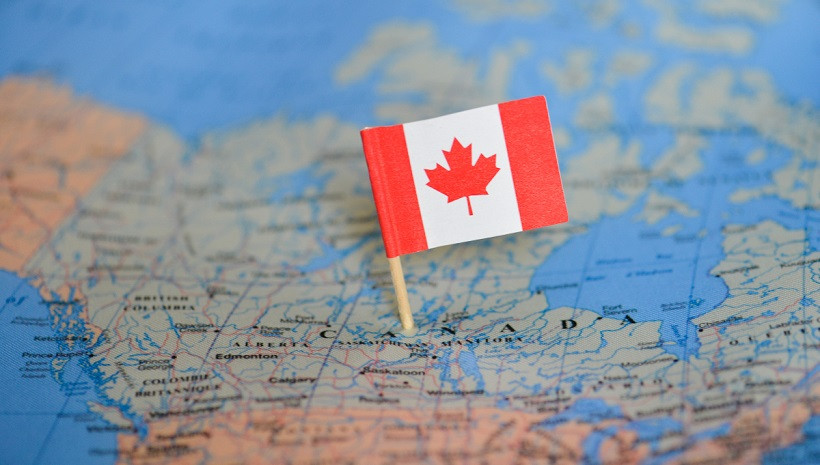
The Bank of Canada said its word during the previous day, which turned out to be in favor of the Canadian dollar. The hawkish attitude of the Canadian regulator allowed the USD/CAD bears to test the level of 1.22 again, but the trading principle "buy on rumors, sell on facts" wiped out the downward impulse. The Canadian dollar has been getting more expensive for several weeks, that is, from September 30 until the announcement of the results of the October meeting. Therefore, when the hawkish assumptions were mostly confirmed, traders took profits, limiting the downward wave of this pair. In addition, dollar bulls are also waiting for the Fed's verdict. So, if the Fed members are less decisive next week than their Canadian counterparts, the Canadian dollar will get a reason to further strengthen.

Yesterday, the Bank of Canada held its final meeting this year, at which it outlined the future prospects of monetary policy. It is no exaggeration to say that these prospects are very hawkish. Firstly, the regulator unexpectedly announced the end of the QE program. Before this meeting, the overwhelming majority of experts did not allow such a scenario. They assumed that the Central Bank would reduce QE to 1 billion in October, and at the first meeting of next year (that is, in January), it would announce the completion of the program. However, BoC's Governor Tiff Macklem said that the country no longer needs incentives, as the national economy will fully recover soon. At the same time, he noted that the indicators of medium- and long-term inflation expectations remain under control and are kept near the 2% target level.
The first point of the Canadian regulator's hawkish program is closing QE. The second point was the announcement of an interest rate increase. And although Macklem did not announce specific time targets, he assured reporters that the Bank of Canada could raise the rate "earlier than previously expected." Given the fact that the regulator has moved the deadline for curtailing incentives, it can be assumed that the Central Bank will decide on this step in the first half of next year. Some experts (they were in the minority before the October meeting) even indicated a double rate increase, the first of which should happen next summer. According to currency strategists of the financial conglomerate Wells Fargo, the Canadian regulator will raise the rate by 25 basis points in June or July next year, and by another 25 points at one of the last meetings of 2022.
Despite the fact that a double rate hike next year is still a big question, the hawkish intentions of the Canadian regulator are beyond doubt. It is obvious that the Bank of Canada will begin to tighten the parameters of monetary policy in 2022, and perhaps even earlier than the dates indicated by the most "hawkish" analysts.
This fact will provide background support for the Canadian dollar paired with the US currency, especially if the Fed "gives up" next week, demonstrating indecision and caution. Given the tone of Jerome Powell's previous rhetoric, it can be assumed that he will not follow the example of Tiff Macklem, who actually announced a rate hike. In particular, the Fed Chairman said at the end of last week that the US regulator "will raise rates only if it sees serious risks of rising inflation expectations." But at the same time, he added that such a scenario is "unlikely" since the increase in inflation is most likely temporary.
Given this disposition, it can be assumed that the head of the Fed will announce a similar message again after the results of the November meeting. In this case, the Canadian dollar will get a fairly powerful trump card, which will be expressed in the divergence of the rates of the Bank of Canada and the Federal Reserve.

All this suggests that the downward trend of the USD/CAD pair is not yet over. The Canadian regulator laid the groundwork for a more prolonged decline yesterday. Before the Fed's November meeting, traders do not risk getting rid of the US dollar, so the Canadian dollar is at a crossroads. However, if the Fed representatives do not justify the hawkish hopes of market participants, the pair will further fall.
The technical picture of the USD/CAD pair also speaks about the priority of short positions. On the daily and weekly charts, the pair is located between the middle and lower lines of the Bollinger Bands indicator. On the D1 timeframe, the price is located on the Tenkan-sen line. If the Canadian dollar consolidates below (that is, below 1.2350), the Ichimoku indicator will form a bearish "Line Parade" signal, which will also indicate the priority of short positions. The main downward target is the level of 1.2250. This is the support level that corresponds to the lower line of the Bollinger Bands indicator simultaneously on the D1 and W1 timeframes.